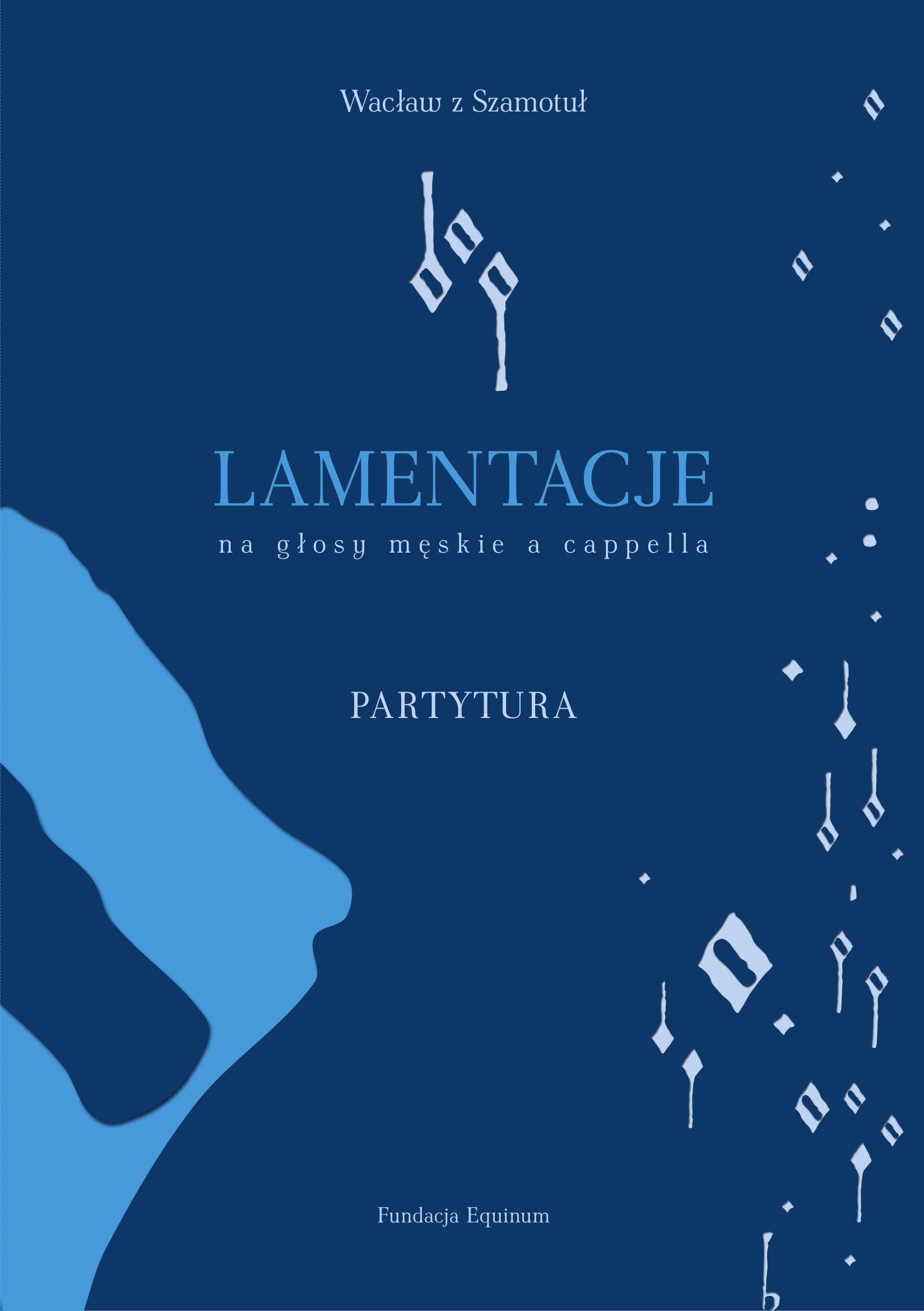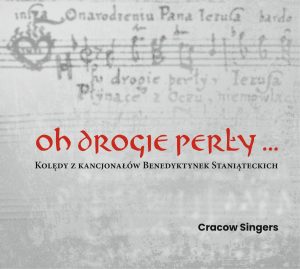
The author of the reconstruction is
prof. Marc Lewon
projekt dofinansowano ze środków Ministra Kultury i Dziedzictwa Narodowego pochodzących z Funduszu Promocji Kultury w ramach programu “Muzyczny ślad” realizowanego przez Instytut Muzyki i Tańca
Order free score! Fill the form.
(redirected to page www.equinum.org)
Raising a Phoenix from Fragments
Making the Lamentationes of Wacław z Szamotuł fit for PerformanceWacław z Szamotuł (ca. 1520/25–ca. 1560) is considered one of the most important composers of the Polish Renaissance. His surviving oeuvre is of considerable diversity, ranging from simple, monophonic hymns and homophonic strophic songs to complex polyphonic compositions in the style of the late Franco-Flemish School. Most of Wacław’s polyphonic works were published 2008 in a slim volume, the size of which only emphasises the fact that, sadly, much of his music is now lost.[1] His four-voice setting of the Lamentationes Hieremiae Prophetae, printed 1553 in Cracow by Łazarz Andrysowic, though listed in the catalogue of his compositions, for a long time had to be counted among the partly lost works: only one copy of its tenor part book had survived in Munich (Bayerische Staatsbibliothek, Ms. Pr. 145 / D-Mbs Ms. Pr. 145). When a copy of the discantus part book emerged in Regensburg in 1983 (Bischöfliche Zentralbibliothek, A.R. 327 / D-Rbza A. R. 327), Eugene C. Cramer took this opportunity to publish a commented edition of a score of the two part books in 1991.[2] Cramer’s edition provides a first impression of the texture that Wacław had intended for his setting: it hints at a restrained use of imitation and exhibits a surprisingly narrow range between the tenor and a low discantus voice, indicating that the missing altus voice would have been in the same range.
When trying to assess the counterpoint of a fragmentary Renaissance composition, it is generally appreciated when tenor and discantus survive, as they usually constitute a contrapuntal framework—particularly so when the compositional style is conservative. In the case of Wacław’s Lamentationes, however, this proved to be a double-edged sword, as the tenor voice is little more than an ornamented and rhythmised version of the lamentation psalmody, i.e. essentially a cantus firmus, comparable to a psalm tone in the sixth mode. It is thus the easiest voice to reconstruct and we would have learned more from the survival of another part, such as the bassus.
Luckily, a few years ago fragments of the missing altus and bassus part books were discovered in the bindings of other books during a cataloguing project at the Archdiocesan Archive of Gniezno. When these fragments were first described and published in facsimile by Jakub Łukaszewski and Wiesław Wydra in 2016,[3] Karol Kusz approached me on the recommendation of Agnieszka Budzińska-Bennett to reconstruct a performable version of the concerning sections of the Lamentationes. As a first step I collated the fragments with the surviving part books into an edition to evaluate which sections of the Lamentationes could be completed with the new material. It turned out that the fragments of altus and bassus never overlap so that sections of ALEPH, almost the entire BETH and VAU, as well as a section of both THET and IOD—all from the Feria Quarta Lamentationes—now survive in three voices, with either the altus or the bassus voice complementing the tenor-discantus framework. Furthermore, the music in the new fragments confirmed the assumption that the altus voice shares its range with both tenor and discantus (c-f’), while the bassus voice seems to stay largely in a standard range between F and f.
At roughly the same time Ryszard J. Wieczorek and Michał Wysocki conducted thorough research on the new fragments, focussing primarily on their contextualisation as well as codicological aspects. They published their findings in 2017 and included an edition of those sections of the Lamentationes that could be complemented by the new fragments.[4] Apart from minor differences their edition agreed with my own reconstruction. Wieczorek/Wysocki also undertook the recomposition of a missing voice (mainly the bassus part) in some of the three-voice sections of VAU, of the end of THET and of the beginning of IOD. Furthermore, they confirmed that the low and narrow setting of the Lamentationes is in accordance with lamentation settings by other contemporary composers and that this suggests a performance by four male voices.[5] Moreover, Wieczorek/Wysocki were able to determine why the fragments ended up as scrap paper and were reused for book binding: it appears that fragments were parts of test prints for proof reading purposes with several minor printing errors and thus unfit for publication.
For their recording of the complete works of Wacław z Szamotuł with the Cracow Singers, Kusz and Budzińska-Bennett required a performable musical text of a substantial part of the Lamentationes. Therefore, it quickly became apparent that all strophes, which were affected by the new fragments—however small their contribution—were needed in a four-voice version. This included extensive sections that even after the collation with the new material remained two-voice. Additionally, a four-voice setting of the “Prologus” was requested, which likewise survives only with tenor and discantus. Under these premises substantial additions to the musical text were required, going beyond the addition of a single voice. The following edition—which includes most of the suggestions for the bassus voice by Wieczorek/Wysocki as an homage to their work—should, therefore, be considered not a critical text or a reconstruction, but an informed “reimagination” of parts of Wacław’s Lamentationes in the form of a performance edition. In order to facilitate performance from this edition, the added parts were not marked. By comparing this edition to the sections edited by Wieczorek/Wysocki, however, their additions to VAU, THET, and IOD can easily be identified. Anything that is not in Cramer or Wieczorek/Wysocki is by myself.
Complementing the fragmentary Lamentationes in an informed manner, required the consideration of a number of parameters, some of which were comparatively easy to assess, such as the voice ranges. Others, however, raised certain challenges. This includes the fact that the harmonic colours of the setting are largely restricted by the limited melodic gestures of the repetitive cantus firmus in the tenor line. My aim was to tease out as diverse colours as possible while at the same time maintaining melodic gestures typical for the surviving parts of the Lamentationes and employing imitation wherever coherent with Wacław’s style. The result at hand was first recorded with the Cracow Singers in 2018 for the label Raumklang under the artistic direction of Agnieszka Budzińska-Bennett, whose liner notes I would like to recommend as a comprehensive appraisal of Wacław z Szamotuł’s surviving oeuvre.[6]
Marc Lewon, Basel in December 2018
[1] S. Kukurenda (ed.): Wacław z Szamotuł. Dzieła Wszystkie, Szamotuły: Fundacja Kultury Zamek Gorkow, 2008.
[2] E. C. Cramer: ‘Nowe spojrzenie na styl muzyczny Wacława z Szamotuł’, in: Muzyka. Kwartalnik poświęcony historii i teorii muzyki 36/2 (1991), pp. 3–90.
[3] J. Łukaszewski and W. Wydra: Fragmenty ‘Kota ze Lwem’ Mikołaja Reja i innych druków z XVI w. odnalezione, Poznań: Poznańskie Studia Polonistyczne, 2016 (Prace Instytutu Filologii Polskiej Uniwersytetu im. Adama Mickiewicza w Poznaniu).
[4] See Wieczorek/Wysocki: ‘“Lamentationes” Wacława z Szamotuł: fragmenty brakujących głosów odnalezione w Gnieźnie’, p. 7.
[5] R. Wieczorek and M. Wysocki: ‘“Lamentationes” Wacława z Szamotuł: fragmenty brakujących głosów odnalezione w Gnieźnie’, in: Muzyka. Kwartalnik poświęcony historii i teorii muzyki 2 (2017), pp. 3–20.
[6] CD Sub Ursae – Under the Northern Sky. Complete works of the Polish Renaissance master Wacław z Szamotuł (Venceslaus Schamotulinus), Cracow Singers, Marc Lewon (lute), Agnieszka Budzińska-Bennett (artistic direction), Raumklang 2019.

